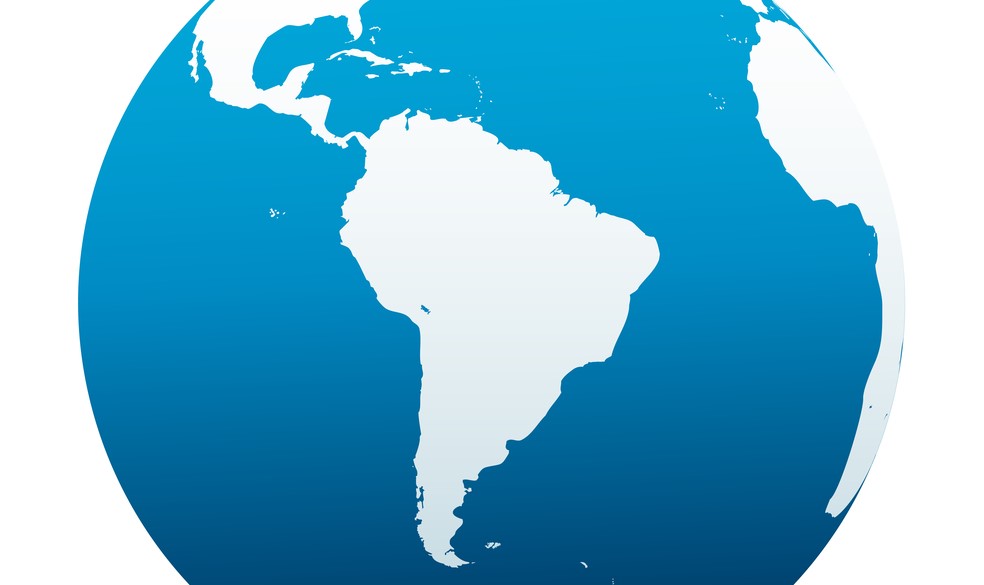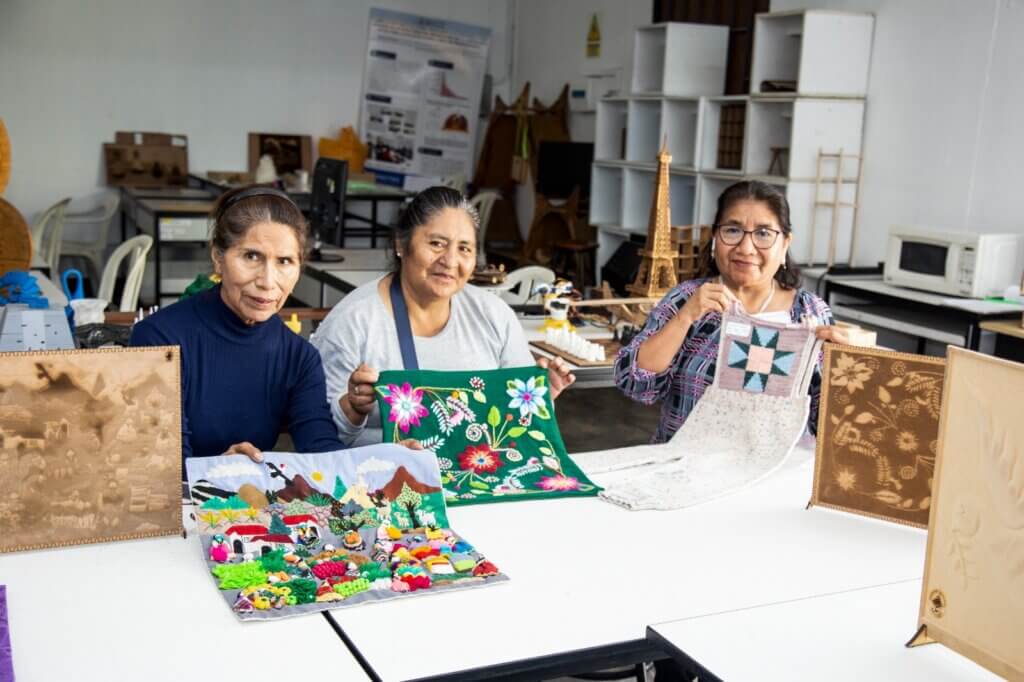Latin America has long suffered from economic instability, inequality and financial exclusion. The region’s economy has grown less than one percent per year since 2014, and Venezuela – once South America’s richest country – has a hyperinflation rate of 19,900 percent.
Access to banking is a critical issue for everyday people in Latin America, where only 51 percent of the population have bank accounts at a formal financial institution.
The sudden onset of the COVID-19 pandemic has therefore placed heavy strain on the region’s economies. As businesses are forced to adapt or close, more than two-thirds of business executives in Peru, Chile, and Colombia believe the outbreak will affect their company’s bottom line.
However, new technologies can help solve some of the problems threatening economic stability in Latin America. The boom in financial technology (fintech) is already paving the way. Currently, there are 703 fintech startups operating in Latin America, with more than 50 percent being launched in the last six years. The region’s fintechs secured a total of $481 million in funding in Q2 of 2019.
Still, more can be done to expand this burgeoning market, with endless socioeconomic benefits. These are the main areas in which new technologies could contribute to (and are) stabilizing economies in Latin America.
Improving access to financial services
The proportion of Latin American citizens with bank accounts varies by country – Venezuela has the highest at 73.2 percent of the population, while Nicaragua has the lowest figure, at 28.4 percent. Even those with bank accounts are seeing their access reduced. In March, Venezuela ordered the closure of Venezuelan bank locations, limiting people’s access to their money.
Before COVID-19, technology began addressing the disparity in access to banking. Neobanks in Latin America are now helping ordinary people manage their money digitally. The Argentinian fintech company Ualá gives citizens a prepaid card and app to make domestic and international payments. Transfers between Ualá users are free of charge, and customers can also top-up their mobile phone credit and pay bills via the app.
Brazil’s Neon is similarly expanding access to banking. Neon users get an international debit card, virtual credit card, and limited free cash withdrawals. They can also use an in-app loan calculator that estimates interest rates and installments to borrow money responsibly. Ualá received $150 million last year in growth-stage funding, while Neon raised $94 million in Series B in November.
Other players are getting involved too. Colombian food delivery unicorn Rappi, recently partnered with fintech infrastructure provider Arcus to help customers better manage their payments without leaving home during the coronavirus crisis. Rappi Pay, which originally only allowed transfers between app users before introducing QR Code payments, now offers users cashback offers and commission-free ATM withdrawals.
New fintech payment offerings of this type are extremely important for low income families dependent on remittances from abroad. Remittances account for 1.5 percent of GDP in Latin America and as much as 15 percent of GDP in countries like El Salvador, Haiti, Honduras, and Jamaica. However, the use of P2P money transfer tools remains relatively low in the region, while costly traditional banks and money transfer operators still dominate the market.
In an attempt to combat the growth of unregulated crypto exchanges and allow citizens better digital access to their funds, the central bank in Brazil recently announced it would launch its own fintech payment platform: PIX, which will facilitate direct transfers between users, without middlemen.
However, for Venezuelans, US government sanctions have led to companies such as Oracle, Adobe and Transferwise pulling services from the region, leaving citizens at the mercy of the highly volatile exchange rate offered by state-run banks. According to Americas Quarterly these charge roughly 6 percent to send remittance payments, compared to the lower rates charged by fintech players.
Supporting SMEs
There are strong signs that COVID-19 is leading to a global recession. In business, small and medium enterprises will be hit hardest.
Latin American SMEs struggle to get loans in the existing financial system because they don’t have enough credit information to pass credit history checks, or because they don’t have sufficient collateral. Poor credit infrastructure has caused banks to often over-price risk, leading to high premiums and interest rates (between 50 and 120 percent) that SMEs can’t afford. Unsurprisingly, cost is the reason 60 percent of the unbanked in Latin America say they do not have formal accounts.
Emerging fintech companies have credit rating systems based on data algorithms that analyze credit risk innovatively, and offer lower interest rates than traditional banks. They also increase SMEs’ access to financial products and models, helping them raise capital.
Examples of successful fintechs for SMEs in Latin American markets include Konfio – a financial service platform based in Mexico that helps SMEs gain liquidity and grow their operations. While banks struggle with lending under $40,000, Konfio loans average $12,000 and are dispensed within 24 hours without collateral. Tienda Pago is a platform for small merchants to buy from distributors using mobile payments, while Alegra is a cloud-based invoicing and administration system for small companies.
Building on new fintech capabilities, Distributed Ledger Technology (DLT) enables peer-to-peer transactions and contracts that can be securely recorded in a decentralized way, providing greater traceability in payments and are faster than traditional ledger systems.
Organizations that are using fintech to prop up businesses in the region include The World Bank. The international body is assisting local producers in Latin America by connecting them directly to North American markets using DLT-powered brokers. These strategies have helped cut out the middleman and pay producers directly, with some projects increasing farmers’ income eight-fold.
Other projects include GrainChain, a startup collaborating with coffee farmers in Honduras to integrate blockchain technology and IoT into coffee supply chain, and Thank My Farmer and IBM project which allows coffee buyers in the US to trace their product’s journey and send a contribution to support sustainable farming projects in agricultural communities on five continents.
Increasing accountability
Corruption in Latin America directly undermines legitimate business. Colombia, Mexico, Guatemala, Brazil, and Bolivia all feature in the top 10 countries for perceived corruption in 2020. Embezzlement and misconduct starve essential funds and resources, and it’s largely enabled by the lack of accountability of people in power.
The economic stability of a country often depends on the whim of corrupt leaders. Central banks are easily exploited; for example, the Venezuelan government, which has been accused of serious criminal activity, has reportedly been removing tons of gold from its central bank vaults to exchange it for cash.
Government systems are so convoluted and opaque that it’s often nearly impossible to track illegitimate activity. But big data, online platforms, and mobile apps are harnessing technology to fight corruption in Latin America. In Brazil, the Public Spending Observatory (Observatório da Despesa Pública) sifts through big data to draw attention to potential fraud in government spending. In 2015, the tool uncovered over 7,500 potentially corrupt cases worth $104 million.
In Colombia, MapaRegalías tracks compliance relating to how royalties from mining and hydrocarbon companies are spent in the public sector. In 2016, the data collected helped suspend transfers to 125 municipalities in the country.
At the same time, technology can be a channel for people to immediately report fraud or corruption. TheIntegrity App helps SMEs worldwide strengthen their compliance and that of their supply chain through self-evaluations and providing tools to promote compliance capacities.
Moving forward
Latin American countries need more regulatory framework and institutional capacity-building before they can capitalize on new fintech technology to the fullest. Defending against risks such as cyberattacks and data privacy have to be prioritized, especially in a region that is highly susceptible to corruption and crime. Furthermore, accessing new tech is often only possible in big cities due to connectivity and hardware disparities in rural areas, which could marginalize such regions even more if these issues aren’t tackled simultaneously.
With these challenges in mind, new tech has a huge potential to prop-up economies in times of crisis, and beyond. Fintech could lead the way in connecting regular citizens to the financial system, connecting SMEs to much-needed resources, and connecting local producers to world markets.










